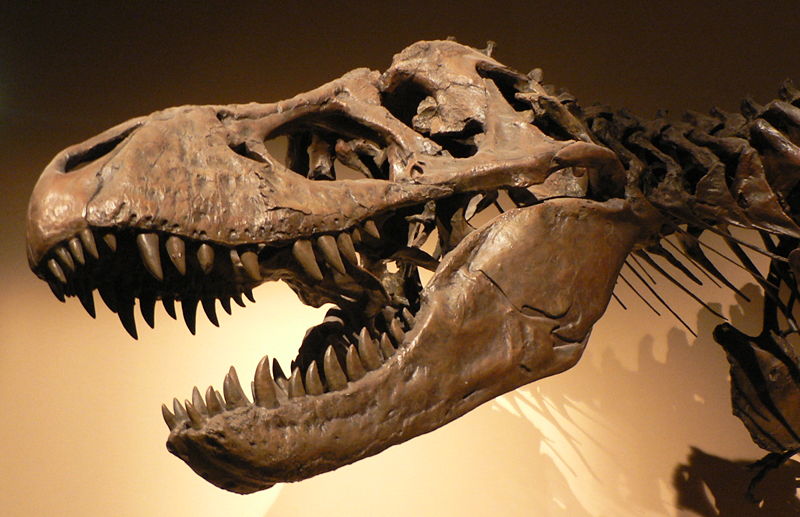We usually think of dinosaurs as huge great beasts, roaring about and generally being terrifying. Now researchers at the University of Manchester have used laser imaging to reveal whether our favourite prehistoric beasts were trim and fit, or big old fattysauruses.
 Writing in the journal PLoS One, Karl Bates and his team used laser imaging and 3-D reconstruction techniques to recreate the bodies of five dinosaurs of differing sizes as they might have appeared in real life. They looked at two Tyrannosaurus rexes, an Acrocanthosaurus atokensis, a Strutiomimum sedens and an Edmontosaurus annectens. Their results suggest that the smaller of the two T. rexes could have weighed anywhere between 5.5 and 7 metric tonnes, while the larger one might have weighed in at 8 tonnes.
Writing in the journal PLoS One, Karl Bates and his team used laser imaging and 3-D reconstruction techniques to recreate the bodies of five dinosaurs of differing sizes as they might have appeared in real life. They looked at two Tyrannosaurus rexes, an Acrocanthosaurus atokensis, a Strutiomimum sedens and an Edmontosaurus annectens. Their results suggest that the smaller of the two T. rexes could have weighed anywhere between 5.5 and 7 metric tonnes, while the larger one might have weighed in at 8 tonnes.
They also think that Acrocanthosaurus atokensis, a big predator similar to T. Rex weighed around 6 tonnes, but the ostrich-like Strutiomimum was probably a weeny 04-0.6 tonnes, while Edmontosaurus weighed in at just under a tonne.
To get their reconstructions, the researchers used a laser scanning technique called LIDAR to image each dinosaur's skeleton. They then used and computer modelling methods that can create a high-resolution 3-dimensional computer image of the skeleton, which they can use to investigate the potential mass of the living dinosaur, its internal organs, and its movements.
After making these reconstructions, the team then tweaked the sizes of the body parts and organs to find the maximum and minimum masses that the animals might have been. Although we'll never be able to know exactly how fat or thin they were, this analysis tells us the range of possible body masses that are physically possible. And because of the lack of cakes and telly in prehistoric times, the researchers think that the dinos probably come in at the lower end of heir predicted weight ranges, as there's no biological need for them to be fatties, as this would slow them down, making them less effective predators, or easy prey.
To demonstrate the accuracy of their models, the researchers applied their techniques to a modern-day ostrich skeleton, and found that their predicted mass measured up pretty well against the living bird.
The next steps - literally - for the researchers will be to use their models to make predictions about how the dinosaurs walked and ran, which will tell us more about their lives and evolution.









Comments
Add a comment